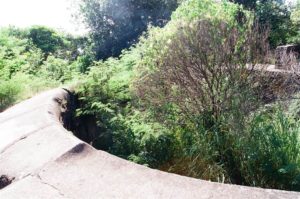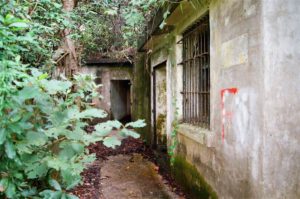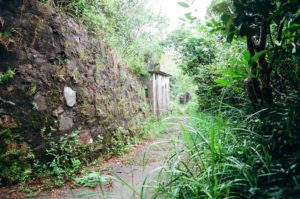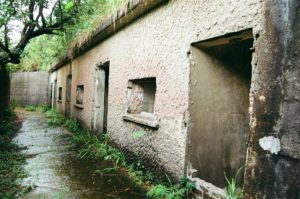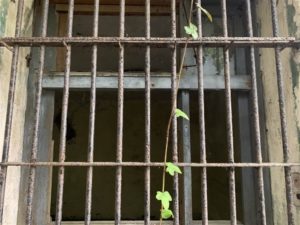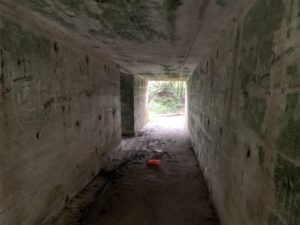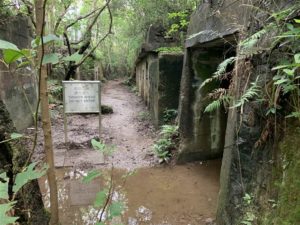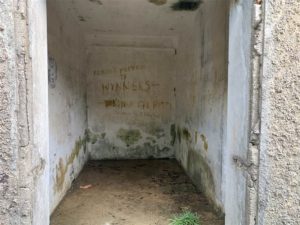Murmurs of the Hollow at Mount Davis
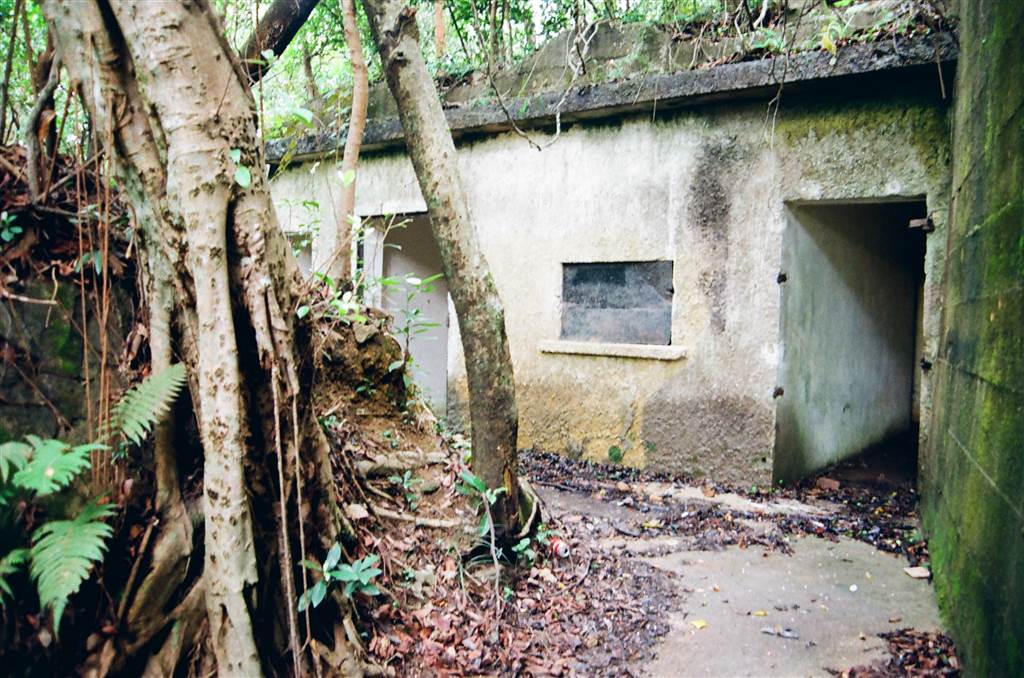
I visited the Mount Davis Battery twice. On the first visit, I went on a sunny day and saw the Mount Davis Battery at mid-hill. I stopped short at seeing the command center on the hilltop. The steep incline was daunting. On my second visit, I went on a rainy day. The visit at the Mount Davis Command Center on the hilltop was the most eerie adventure of all the places I have visited in Hong Kong.
Views of Hong Kong on the West
We saw beautiful sea views on western Hong Kong on the Mount Davis Path. The trail is a gradual incline from the ground level for thirty to forty-five minutes up to the top. On a sunny summer day it can be a bit strenuous. There is a shortcut, but the steps are quite rigorous, so on both times we avoided the steps and only took on the paved road.
Strategic Defense of Hong Kong
In the early 1900s when it was built, the Mount Davis Battery was envisioned to be a major defense for western Hong Kong. The entry into Victoria Harbour from the west is as wide as 3,600 yard. As compared to the entry on the East via Lei Yue Mun, which is only 500 yards, the wide entry point on the west clearly presented the need for significant fortifications.
As such, the Mount Davis Battery has, at one point, had the capability of hosting five cannons. Out of these five, four could aim at all strategic points on the sea entry on the west. The gun emplacements completed in 1912. The hilltop fortification served as the command center for the defense of western Hong Kong Island, consisting of gun emplacements, the Western Fire Command, ammunition storage, barracks and concealed structures.
By the mid-1930s, thinking on defense strategy changed. Two of the five 9.2-inch canons at Mount Davis were moved to the Stanley battery in order to reinforce defense at southern Hong Kong Island. Indeed, Stanley would become the “last man standing” in Hong Kong’s anti-Japanese war.
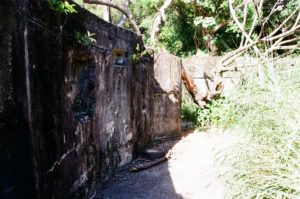
Photos above and below: a Gun Emplacement Mid-Hill at Mount Davis
Beginning on December 11th, 1941, the Japanese imperial army launched aerial attacks on the Mount Davis Battery. On December 16th, the Japanese intensified its attacks by calling in its air force in the Philippines and its naval fleets. A total of 62 air bombers focused on the battle at Mount Davis. This has effectively destroyed the command center at Mount Davis. Before the final surrender, the British forces destroyed most of the fortification on site. Since then, the Mount Davis Battery has remained a historic relic.
A Lingering Eeriness
“I am not going in there, too many mosquitoes already,” my friend stopped at the entrance of the command center. With that I went into the fortifications on my own.
The eeriness was apparent. Odd sounds seemed to be coming at me everywhere. I swear that each step I took triggered echoes. It felt as if the spirits murmured through the silent passing of time, from deep inside the hollows of the chambers. It is believed that there are mass graves there.
After a brief walk-around, I went further uphill and found even more structures in ruins. There was a sign at one site barring tourists from going further. Due to the rain, puddles of water has formed. I would not have been able to pass through anyway. The further I went around, the more eerie it was. Overgrown trees hovered over me, their branches seemed to bear the memory of the only war that Hong Kong has seen in its short history.
I usually do not believe in ghosts, but I do think that the Mount Davis Battery is haunted — perhaps by the horrors of war.
Sources:
The introduction on site at the Mount Davis Battery
A Guide to Hong Kong’s War Zones, Ko Tim Keung (Chin. 1995) at 73-78, 93-94.



